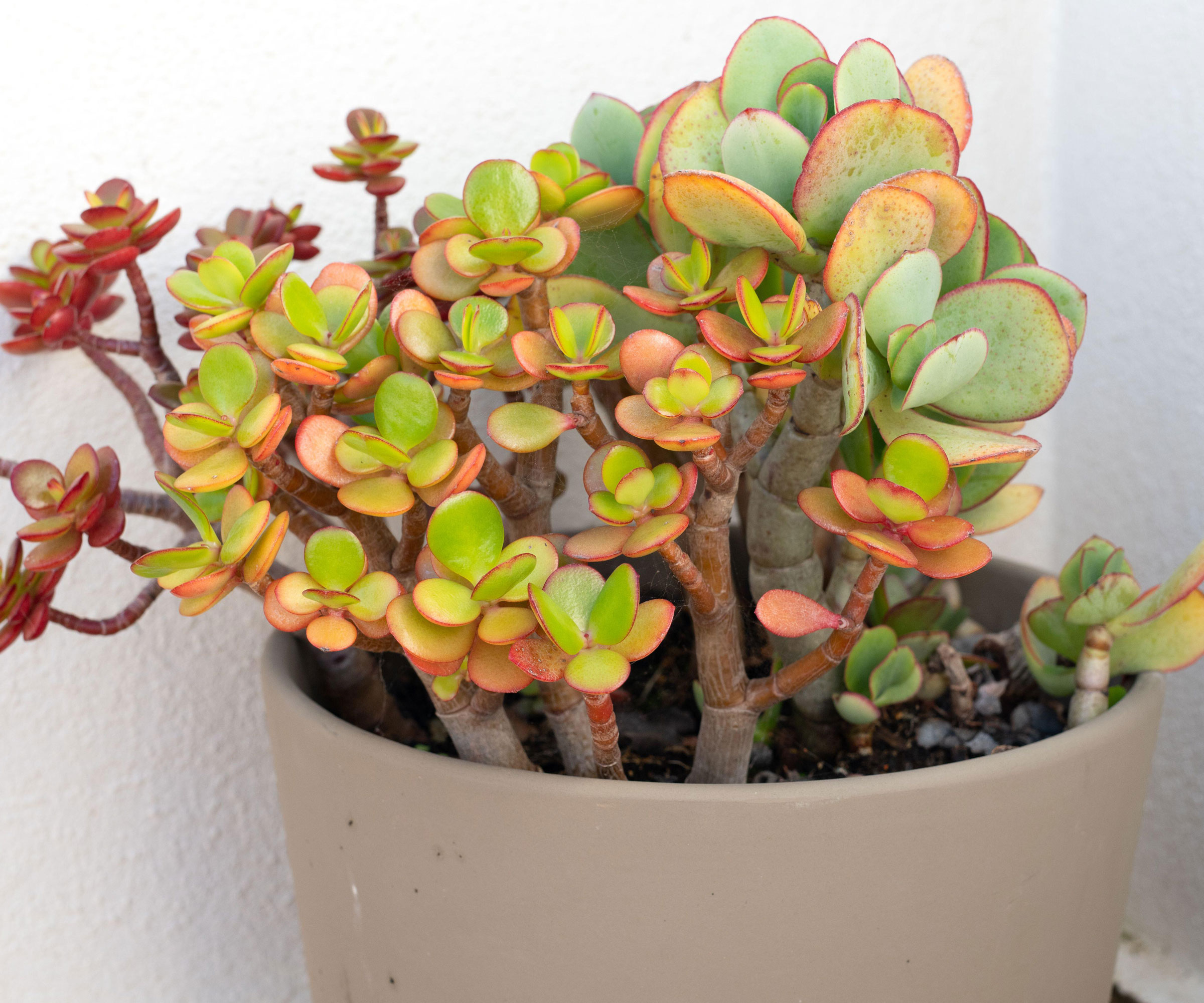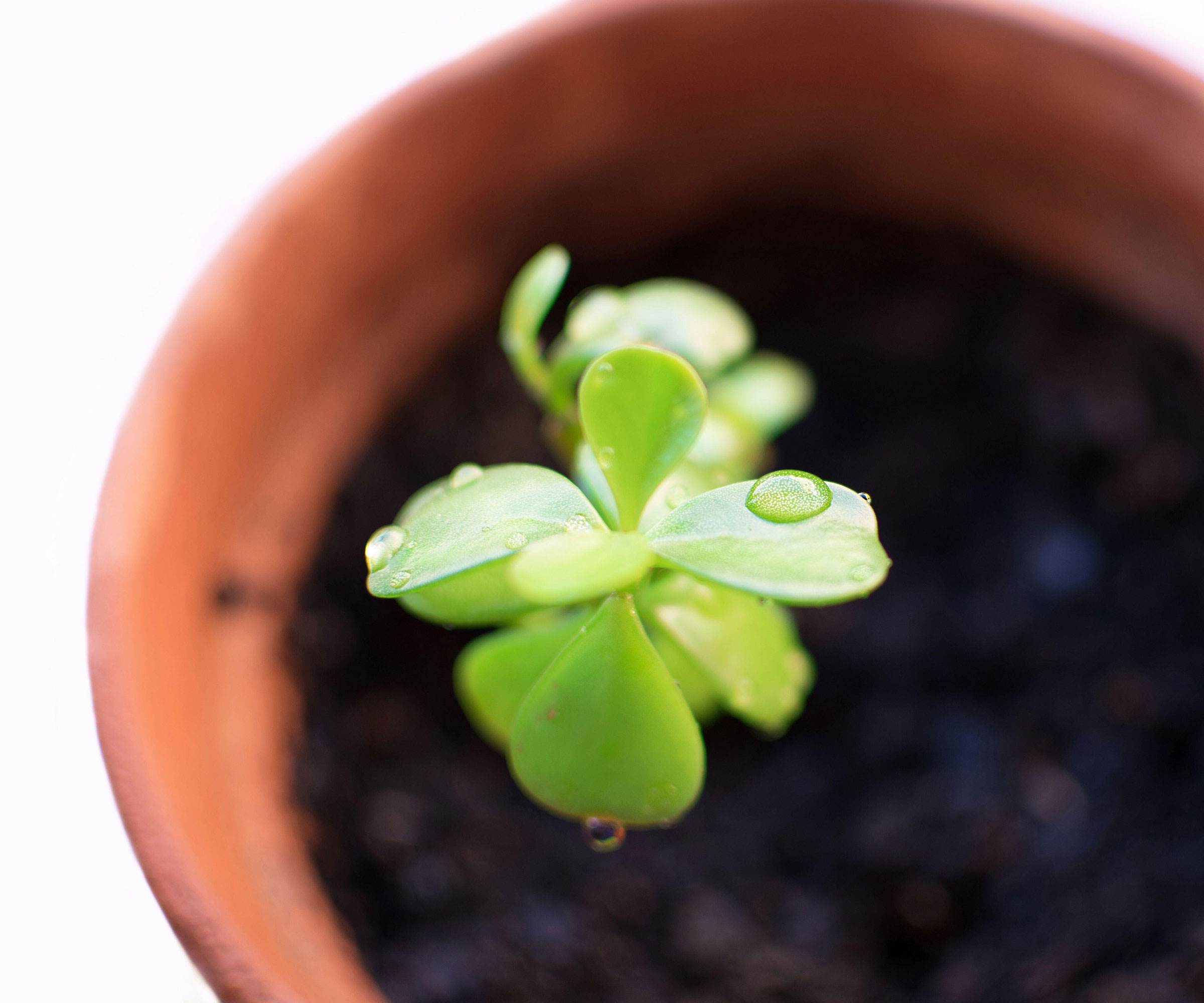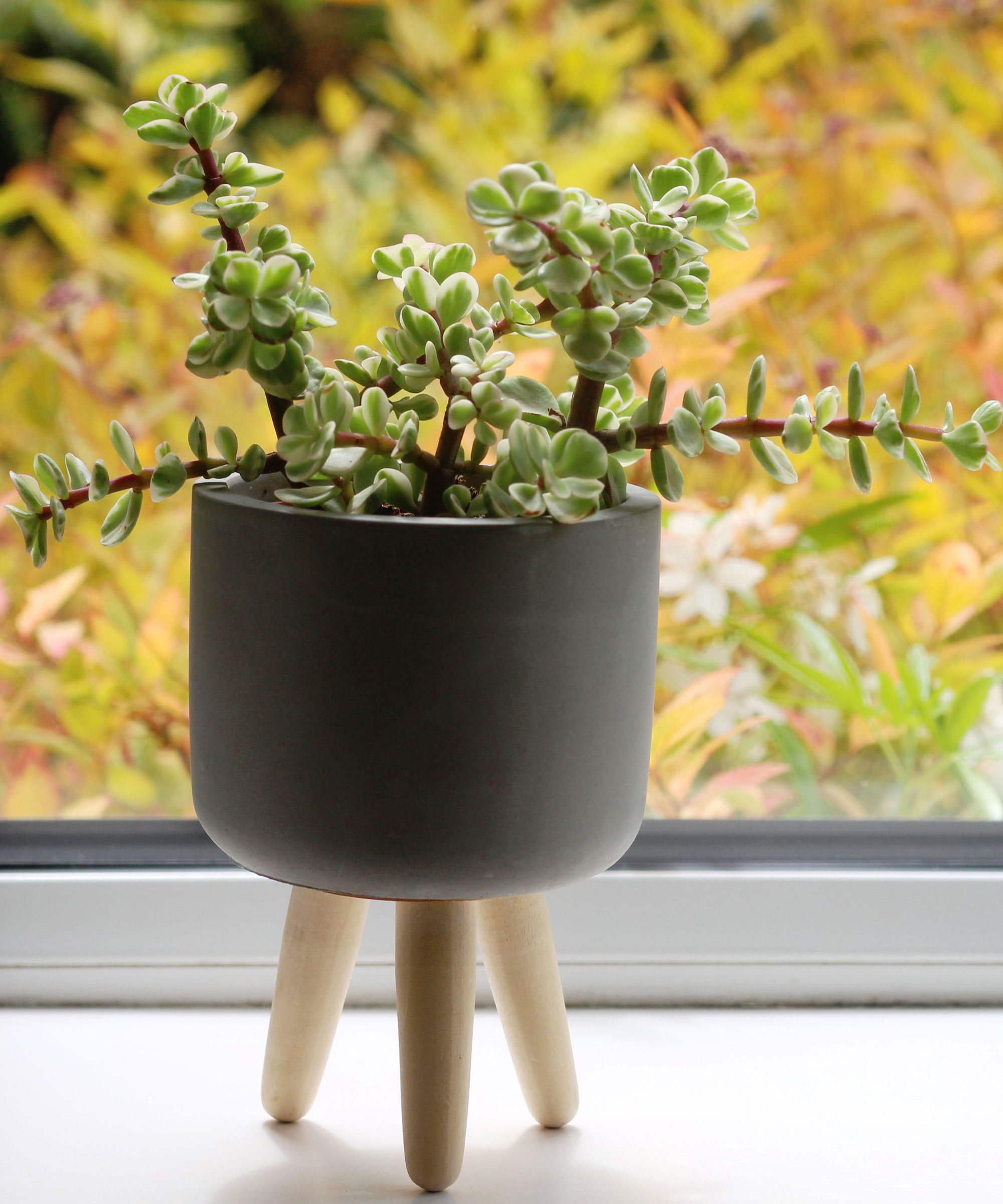How to propagate elephant bush succulent – our step-by-step guide will show you the way
Put these easy-going succulents at the top of your list of ideas for propagating and you will grow your indoor plant collection in a flash


Elephant bush succulents (also known by their botanical name Portulacaria afra) are one of the easiest succulents to grow and propagate. If you create the ideal conditions for the stem cuttings, they will root quickly and even produce new leaves in as little as 10 days.
This attractive shrubby little plant is grown indoors in cooler climates but is the perfect plant to grow outside in containers year round if you live in US hardiness zones 10-11. It's a great idea if you're looking for a summer container option that requires minimal watering and care.
The leaves of these shapely plants are small and round, with a waxy sheen. In fact, they look a little like a jade plant. They are mostly green but occasionally variegated. In summer they sometimes have little pink flowers too.
There are plenty of different varieties of elephant bush to choose from. Some have an upright habit, and can grow a couple of feet tall, while others like to spread. It's one of the best types of succulents if you want an architectural focal point indoors.

How to propagate elephant bush: step-by-step guide
Although they can be grown by seed, there are easier ways to propagate elephant bush succulents. 'This variety is best propagated by taking cuttings,' says Atlanta-based plant expert Ara Flink. 'Then you can either grow them on in soil or water.' As well as using stem cuttings you can also propagate the leaves, but this is the less usual method.'
Finding out how to propagate succulents is important if you love the look of these plants in your interior and want to grow your collection quickly.
If your elephant bush succulent is overgrown and bushy with excess growth, this is ideal material for propagating new plants. Even if you currently only have a small plant you can still try by taking a cutting or two, or experiment with propagating a single leaf. If you're looking for easy indoor plants to propagate put elephant bush succulents at the top of the list.
Design expertise in your inbox – from inspiring decorating ideas and beautiful celebrity homes to practical gardening advice and shopping round-ups.
Follow our step-by-step guide to find out how to propagate elephant bush succulent successfully.

Ara lives in Atlanta, GA with well over 100 houseplants. She loves sharing ways to make plant care easy for plant parents. Ara started her business Propagation Diaries with the aim of enhancing the beauty and quality of your plant collection. Specially designed products and growing mediums will aesthetically and functionally improve the experience of growing plants.
1. Take a stem cutting (or several)

Take several stem cuttings if you have enough plant material or a single cutting if your options are more limited. Choose the healthiest looking stems with plump green leaves. This indicates the leaves have a good water reserve and will quickly grow new leaves.
Use clean, sharp scissors, or use pruning shears if you're taking cuttings from an outdoor plant. 'Aim to make each cutting 3-4 inches long,' recommends Ara Flink.
Make sure the stems aren't overly long. If you are left with any small sections you can try potting these too, perhaps in a terrarium to see if they root.
Giving your plants a haircut by removing branches to propagate will invigorate your plant. Cutting excess growth like this lets air into the structure of the plant. The young stems underneath will soon bush up and get thicker, so you will end up with a much healthier parent plant.
2. Prep your plant material

Start by removing the bottom leaves from each stem to clean up the portion that you will be planting in the soil. Snip off any side shoots too. You should end up with a section of bare stem but leave the nodes as these are typically where rooting can occur.
Aim for between 2-6 inches of bare stem to sit beneath the surface of the soil depending on the size of the cutting and the size of pot you're using. You need to do this to ensure any new roots get enough moisture, and the soil near the bottom of the pot is moister.
The ends of the cuttings will be quite sappy. Leave them to dry for a couple of days so they callus over. Doing this step means your cuttings won't be as susceptible to rot and moisture.
3. Pot up cuttings in the right soil mix

The next step is to put together a soil mix that will help the elephant bush stem cuttings to root. 'Choose a fast draining, perlite-heavy mix and a pot slightly larger than the cutting,' says Ara Flink.
If you're a succulent fan you've probably got your own special recipe already, but if you're pushed for time try Miracle-Gro Succulent Potting Mix available here from Amazon.
Push several of the prepared stems into the potting compost and water well. Move the pot to a spot where temperatures are a consistent 65 degrees.
Your stem cuttings will root within 1-3 weeks. With the right conditions, elephant bush stem cuttings can produce roots very fast, sometimes in as little as 10 days.
4. Aftercare for elephant bush cuttings

Water once a week, once the soil has stayed dry for more than a day or two. How often you water largely depends on how humid or dry the air is in your home, as well as whether you are propagating outdoors or indoors. Your cuttings won't die if you leave them without water but they won’t root and produce new leaves as quickly.
Keep the cuttings in bright indirect light. If propagating outdoors, protect your cuttings from direct sunlight by placing them under taller plants or another shaded area.
After a couple of weeks, try lightly pulling on the cutting to see if you can feel any resistance. If you do, this indicates that roots have grown and your propagation efforts have been successful.
Alternatively, if you see new leaves coming out and growing from cuttings, you'll know they have taken and are ready for transplanting into a bigger pot.
FAQs
When is the best time to propagate elephant bush?
The best time to propagate elephant bush is in spring and summer, as with so many plants. Timing is important when it comes to propagation. You will get quicker results in spring and summer because your cuttings will grow faster due to the warmer temperatures and better light conditions.
In addition to this, spring and summer is the height of your parent plant's growing season. Your plant will have plenty of energy, which increases the chances of your cuttings rooting and growing successfully.
You can still propagate an elephant bush in winter and fall but they will not grow as much. You might not see any new leaves until spring but rest assured their roots will be happily growing under the surface.
Can you propagate elephant bush leaves?
Yes it is possible to propagate elephant bush leaves but it takes much longer than stem cuttings and requires patience. Put simply, stem cuttings are the preferable option as it's a faster and easier way, plus you'll have a greater chance of success.
Meanwhile if you notice your parent plant has shed a healthy leaf or two there's no harm in pushing them back into the soil in the pot and letting them do their thing.
Alternatively, pull off a leaf. 'Succulents are so much fun to propagate,' says plant designer Kamili Bell Hill, author of Happy Plants, Happy You! available from Amazon. 'All you need is a leaf. You gently twist the leaf off, allow it to dry for a day or two, and then lay it on top of soil. That’s it! It’s pure plant magic.'

Kamili Bell Hill combines her love of plants and design to curate a brand and community known as PlantBlerd, where she partners beautiful houseplants with simple care information and words of encouragement. PlantBlerd serves as both a style and a growing guide. After noticing a lack of social media platforms highlighting houseplant collectors that look like her, she established BlackPeople.WPlants featuring Black houseplant collectors from around the world. She put a career in law on hold to pursue her true passion of interior design and quickly realized the important role plants play in her clients’ designs.
Can you propagate elephant bush in water?
Yes you can propagate elephant bush in water but it's not as foolproof a method as planting cuttings in soil. But it's definitely worth a go as it's another option when you're learning how to propagate elephant bush succulent, especially as you don't have to bother watering it.
'Take the cutting, and let it sit out for a few hours to callus over,' says plant expert Ara Flink. 'Use a clear vessel so you can easily monitor root growth, and place the vessel near a light source such as a gro-light or bright window. In about 14-21 days, you should see root growth. Once the roots are 2-3 inches long, the cutting can be transferred to soil.'
Propagating an elephant bush may require some patience and care, but you will be rewarded with lots of new plants. If you find you get the bug, discover out how to propagate aloe and how to propagate jade plants to grow your collection of these easy succulents.
You'll also need to know how to repot succulents when your elephant bush cuttings take off.

Lifestyle journalist Sarah Wilson writes about garden design and landscaping trends for Homes & Gardens. She has studied introductory garden and landscape design, and also has an RHS Level 2 qualification in the Principles of Plant Growth and Development. She is a regular contributor to Homes & Gardens and Livingetc. She has also written for Country Living, Country Homes & Interiors, and Modern Gardens magazines